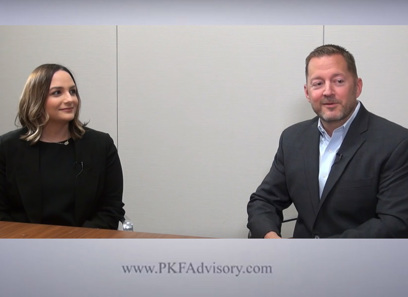The Function of Mergers and Acquisitions fit Sector Patterns and Advancements
Mergers and procurements have significantly end up being a crucial mechanism for companies seeking to navigate the intricacies of modern-day markets. As markets grapple with fast technological developments and changing customer needs, comprehending the implications of M&A methods provides useful understandings right into future fads.
Comprehending M&A Characteristics
Mergers and purchases (M&A) frequently act as essential approaches for firms looking for development, competitive advantage, or market debt consolidation. Understanding the characteristics of M&A is necessary for both professionals and stakeholders in browsing the complicated landscape of corporate purchases. M&A procedures typically include a number of phases, consisting of target identification, due diligence, arrangement, and integration, each bring its own obstacles and risks.
The inspirations behind M&A can differ significantly; companies might seek these strategies to access new markets, obtain ingenious technologies, or accomplish operational harmonies. In addition, modifications in financial conditions and governing settings can affect M&A task, prompting firms to adapt their techniques accordingly.
Effective implementation of M&A deals requires a detailed understanding of the social, monetary, and functional implications involved. Firms should examine not just the measurable facets, such as valuation and monetary efficiency, yet additionally the qualitative factors, consisting of company society and worker belief. Inevitably, the ability to properly take care of these dynamics can identify the success or failure of an M&An effort, underscoring the need for calculated preparation and educated decision-making throughout the procedure.
Influence on Market Competition
The results of mergings and procurements on market competition can be profound, usually improving industry landscapes. When companies combine, they regularly boost their market power, enabling them to set costs extra openly and determine terms to vendors and customers. This boosted power can cause reduced competition, as smaller sized gamers might struggle to complete against the incorporated resources and abilities of the merged entity.
Furthermore, M&A tasks can bring about market focus, where fewer companies dominate the industry. This focus can suppress competitors, causing higher rates and less choices for consumers. The affordable ramifications of mergers and purchases are not globally negative. Sometimes, they can produce efficiencies that benefit consumers, such as boosted solutions or lower prices via economic situations of range.

Advancement Through Collaboration
Cooperation between companies can offer as a considerable catalyst for technology, enabling companies to utilize each other's toughness and sources. When companies combine their knowledge, they produce an abundant ground for the advancement of brand-new ideas, products, and modern technologies. This harmony usually leads to boosted analytic abilities, enabling firms to deal with complicated obstacles that would be challenging to address individually.
Additionally, collective efforts can increase the research study and growth process. By merging their technical capabilities and intellectual funding, companies can substantially minimize time-to-market for cutting-edge solutions. This is especially evident in markets where quick technological advancements are extremely important, such as telecommunications, drugs, and info technology.
In addition, partnerships created via mergings and acquisitions can cultivate a society of development - Mergers and Acquisitions. When workers from various histories and ability collections integrated, they contribute diverse point of views that can inspire creative thinking and cause innovation advancements. This this article collaborative setting not only improves employee morale yet additionally improves retention rates, as people feel more taken part in a dynamic workplace
Sector-Specific Trends
Market characteristics are progressively formed by sector-specific patterns that influence the strategies and results of mergers and procurements. Various markets are experiencing special stress and possibilities, motivating firms to pursue M&A as a critical device to deal with these challenges.
In technology, the fast speed of technology and digital makeover drives companies to acquire startups to boost their capacities and increase their product offerings. The health care industry is observing loan consolidation as organizations look for to boost operational efficiencies and broaden their solution varieties in response to governing modifications and progressing patient needs.
The customer items market is also going through considerable adjustments, with sustainability coming to be a vital emphasis. Mergers and procurements are being leveraged to integrate ecologically pleasant techniques and items, lining up with consumer choices and governing assumptions.
In finance, the surge of fintech is prompting standard organizations to get ingenious tech firms to remain competitive and improve consumer experiences. These sector-specific trends not just dictate the nature of M&An activity but also highlight the necessity for companies to continue to be active in an ever-evolving market landscape. Understanding these fads is important for stakeholders to prepare for shifts and leverage opportunities efficiently.
Future Outlook of M&A
A transformative age is on the horizon for acquisitions and mergings, driven by technical developments, regulatory changes, and shifting Continued consumer actions. Companies are progressively leveraging information analytics and expert system to determine possible targets and improve due diligence processes, boosting decision-making efficiency. This technological assimilation not just accelerates purchase timelines yet likewise enhances the precision of evaluations.

As customer choices proceed to advance, especially towards sustainability and electronic interaction, businesses will seek purchases that line up with these fads. Companies concentrating on digital platforms or environment-friendly modern technologies are anticipated to become attractive targets, showing a broader industry dedication to adapt and grow in altering market problems.
Inevitably, the future of M&A will be defined by agility and responsiveness, as firms identify the necessity of tactical partnerships to stay affordable. The landscape will favor those who can properly straighten their purposes with emerging fads while balancing technological technologies and governing complexities.
Verdict
By assisting in source sharing and expertise assimilation, M&An initiatives drive functional performances and increase the development of brand-new innovations. As markets continue to advance in reaction to consumer needs and market shifts, the tactical search of M&A will continue to be essential in shaping future fads and cultivating lasting development.
As sectors grapple with fast technological developments and shifting customer demands, understanding the implications of M&An approaches offers valuable understandings right into future trends.Mergers and acquisitions (M&A) often serve as essential techniques for business looking for growth, competitive advantage, or market loan consolidation.Additionally, M&An activities can lead to market focus, where less firms control the market. These sector-specific fads not only determine the nature of M&A task yet also highlight the need for companies to continue to be agile in an ever-evolving market landscape. As markets continue to evolve in reaction to consumer demands and market shifts, the strategic pursuit of M&A will stay crucial in forming future trends and cultivating sustainable development.